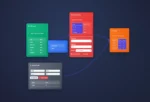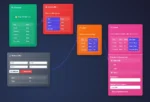
by tyler garrett | Jun 9, 2025 | Data Processing
In the age of big data, modern businesses rely heavily on collecting, storing, and analyzing massive amounts of information. Data deduplication has emerged as a vital technology in managing this growing demand, achieving cost reductions and performance efficiency. Yet, as enterprises balance the benefits of deduplication with the complexities of execution, such as increased compute resources, decision-makers uncover the nuanced economic dimensions surrounding this technology. Understanding these trade-offs between storage savings and computational demands can open strategic doors for organizations aiming for agility, cost-efficiency, and streamlined data operations. As experts in data, analytics, and innovation, we at Dev3lop offer our insights into how organizations can leverage these dynamics strategically to gain competitive advantage.
How Data Deduplication Optimizes Storage Efficiency
Every business segment, from healthcare and finance to retail and technology, wrestles with exponential data growth. Repetitive or redundant datasets are common pitfalls as organizations continually generate, share, backup, and replicate files and databases. This inefficiency taxes storage infrastructures, eating away at limited resources and inflating costs. However, data deduplication dramatically shrinks this overhead, identifying and removing redundant chunks of data at block, byte, or file-level—the ultimate goal being that each unique piece of information is stored only once.
Let’s consider a common scenario: without deduplication, repeated backups or replicated data warehouses significantly multiply infrastructure costs. Storage systems quickly grow bloated, requiring frequent and expensive expansions. By implementing deduplication technologies into your existing workflow—particularly if you heavily utilize Microsoft SQL Server consulting services and data warehouse management—you transform your architecture. Storage constraints are minimized, scaling becomes agile and cost-effective, and hardware refresh intervals can be prolonged. Deduplication, therefore, is more than just an optimization; it’s a strategic implementation that propels resilient and budget-friendly IT environments.
The Compute Cost of Data Deduplication: Understanding Processing Demands
While storage savings offered by deduplication present an alluring advantage, one must remember that this benefit doesn’t come entirely free. Data deduplication processes—such as fingerprint calculations, hash comparisons, and block comparison—are compute-intensive operations. They demand CPU cycles, RAM allocation, and can introduce complexity to ingestion workflows and real-time analytics processes, even impacting ingestion patterns such as those discussed in our guide on tumbling window vs sliding window implementation in stream processing.
When deduplication is applied to streaming or real-time analytics workflows, computational overhead can negatively impact fresh data ingestion and latency-sensitive operations. Compute resources required by deduplication might necessitate significant reallocation or upgrades, meaning your decisions around deduplication must reconcile anticipated storage reductions against potential increases in compute expenses. As analytical insights increasingly shift towards real-time streams and live dashboards, understanding this trade-off becomes crucial to protect against declining performance or higher costs associated with infrastructure expansions.
Making strategic decisions here is not about discarding deduplication but knowing when and how deeply to apply this capability within your continuity planning. For businesses needing strategic guidance in these nuanced implementations, leveraging our tailored hourly consulting support expertise can clarify risk thresholds and performance optimization metrics.
Data Accuracy and Deduplication: Precision versus Performance
An overlooked part of deduplication economics is how these processes impact data quality and subsequently analytical accuracy. Storage-optimized deduplication processes may occasionally misalign timestamping or metadata contexts, causing combination and matching errors—particularly when designing auditable data platforms that rely heavily on time-series or event-driven structures. Proper algorithms and meticulous implementations are required to avoid introducing unintended complexity or reduced accuracy into analytical processes.
For example, organizations implementing event sourcing implementation for auditable data pipelines depend heavily on precise sequence alignment and chronological context. Deduplication can inadvertently blur critical details due to assumptions made during redundancy identification—resulting in serious analytical inaccuracies or compliance risks. Therefore, deduplication algorithms need careful examination and testing to ensure they offer storage efficiencies without compromising analytical outcomes.
As a strategic leader actively using data for decision-making, it’s essential to validate and refine deduplication techniques continuously. Consider implementing best practices like rigorous data lineage tracking, comprehensive metadata tagging, and precise quality testing to balance deduplication benefits against potential analytical risks.
Architectural Impact of Deduplication on Data Platforms
Beyond the core economics of storage versus computation, the architectural implications of deduplication significantly influence organizational agility. The timing—whether deduplication occurs inline as data arrives or offline as a post-processing action—can dramatically change architectural strategies. Inline deduplication conserves storage more aggressively but increases upfront compute requirements, affecting real-time data ingestion efficiency and resource allocation. Offline deduplication eases compute stress temporarily but requires extra storage overhead temporarily, which can disrupt operations such as data-intensive ingestion and analytics workflows.
Moreover, architectural decisions transcend just “where” deduplication occurs—data teams need to consider underlying code management strategies, infrastructure agility, and scalability. Organizations exploring flexible code management methods, as explained in our article on polyrepo vs monorepo strategies for data platforms code management, will find the choice of deduplication patterns intertwined directly with these longer-term operational decisions.
The takeaway? Strategic architectural thinking matters. Identify clearly whether your organization values faster ingestion, lower storage costs, near real-time processing, or long-term scale. Then, align deduplication strategies explicitly with these core priorities to achieve sustained performance and value.
Data Visualization and Deduplication: Shaping Your Analytical Strategy
Data visualization and dashboarding strategies directly benefit from efficient deduplication through reduced data latency, accelerated query responses, and cost-effective cloud visual analytics deployments. Effective use of deduplication means data for visualization can be accessed more quickly and processed efficiently. For instance, as we discussed in data visualization techniques, a comparison, fast dashboards and visualizations require timely data availability and strong underlying infrastructure planning.
However, to further capitalize on deduplication techniques effectively, it’s vital first to assess your dashboards’ strategic value, eliminating inefficiencies in your visualization methodology. If misaligned, needless dashboards drain resources and blur strategic insights—prompting many teams to ask how best to kill a dashboard before it kills your strategy. Proper implementation of deduplication becomes significantly more effective when fewer redundant visualizations clog strategic clarity.
Finally, providing new stakeholders and visualization consumers with compelling guides or onboarding experiences such as described in our article on interactive tour design for new visualization users ensures they effectively appreciate visualized data—now supported by quick, efficient, deduplication-driven data pipelines. Thus, the economics and benefits of deduplication play a pivotal role in maintaining analytical momentum.
A Strategic Approach to Deduplication Trade-off Decision Making
Data deduplication clearly delivers quantifiable economic and operational benefits, offering substantial storage efficiency as its central appeal. Yet organizations must grapple effectively with the computational increases and architectural considerations it brings, avoiding pitfalls through informed analyses and strategic implementation.
The decision-making process requires careful evaluation, testing, and validation. First, evaluate upfront and operational infrastructural costs weighed against storage savings. Second, ensure deduplication aligns with your analytical accuracy and architectural resilience. Ultimately, measure outcomes continuously through clear KPIs and iterative refinements.
At Dev3lop, we specialize in helping companies craft robust data strategies grounded in these insights. Through strategic engagements and a deep foundation of industry expertise, we assist clients in navigating complex trade-off and achieving their goals confidently.
Ready to elevate your data deduplication decisions strategically? Our experienced consultants are here to support targeted exploration, tailored implementations, and impactful results. Contact Dev3lop today and start shifting your priorities from simple storage economics to actionable strategic advantage.

by tyler garrett | Jun 6, 2025 | Data Processing
In today’s hyper-connected digital landscape, the allure of instant, “real-time” data analytics frequently dominates strategic decision-making discussions. Real-time processing promises immediate insight, lightning-fast responses, and the competitive edge that today’s organizations urgently crave. However, is continuous real-time analytics truly the smartest solution for every scenario? At Dev3lop, we’ve tackled challenging analytics and innovation problems across industries. After countless implementations and consultations, we’ve consistently observed one overlooked truth—batch processing isn’t antiquated; it can sometimes outperform real-time approaches. Let’s walk through the counter-intuitive world of batch processing, explore scenarios where real-time isn’t king, and reveal how a nuanced understanding of wave-like batch execution might dramatically redefine your analytics strategy.
The Rise of Real-Time Analytics and the Hidden Costs
The excitement around real-time data analytics stems from its undeniable appeal—instantaneous results equate to swift business responses and timely interventions. With technologies like Apache Kafka, real-time data streams have gained immense popularity, creating an industry buzz around immediacy. However, decision-makers often ignore significant hidden costs associated with adopting real-time analytics solutions. Real-time processing architectures require substantial investment in infrastructure, elevated maintenance complexity, and intricate troubleshooting—consequently raising both operational overhead and technical debt.
By contrast, batch processing workflows often represent more practical, reliable analytical pipelines with predictable costs. For example, batch-driven processes like data aggregation, reporting, and ETL jobs frequently handle larger data sets more efficiently and economically. In the context of data engineering, a balance must be struck between speed, complexity, and reliability. Continuous integration and continuous delivery (CI/CD) pipelines, discussed in detail in our comprehensive CI/CD pipeline guide, clearly benefit from predictable, reliable processes—qualities more aligned with batch-based methodologies than always-on, hyper-complex real-time frameworks.
When Real-Time May Become Overkill
The rush toward real-time data analytics often overlooks reality checks within the business environment. Business intelligence and reporting typically require accuracy, simplicity, and consistency above instantaneous response. Operational dashboards meant to support strategic decisions benefit little from second-by-second updates; instead, emphasizing reliability and completeness is crucial. If dashboards display data that doesn’t drastically shift within minutes or even hours, the incremental gains promised by real-time wanes significantly. Leveraging batch processing for operational intelligence can substantially reduce costs and system complexity, enabling businesses to focus more on analysis rather than troubleshooting.
Furthermore, businesses frequently underestimate the inherent challenges of managing real-time data pipelines. Real-time dataset quality can degrade rapidly due to errors spreading instantly without sufficient validation opportunities. Conversely, batch processing inherently accommodates robust data validation procedures, error correction, and careful auditing, enhancing overall data reliability. For these scenarios, a well-designed batch process aligned with best practices outlined in our data literacy culture-building article often surpasses real-time architectures in both reliability and cost-efficiency.
Data Aggregation and Historical Analytics—Batch Processing Takes the Crown
Real-time might sound fascinating, but consider long-term analytics activities like evaluating seasonal revenue trends, market research data, or annual forecasting models—tasks that fundamentally operate with historical data. Here, batch processing stands uncontested. Organizations that effectively manage historical datasets, employing optimized batch strategies, can generate highly accurate and actionable insights.
One specific use-case merits emphasis: hierarchical analytics. Hierarchies and recursive data scenarios demand precise analytical queries to evaluate organizational structures, inventories, financial rollups, and managerial reporting lines. Optimizing such complex hierarchical data through efficient analytical patterns is critical, as highlighted in our article on recursive materialized view patterns for efficient analytics hierarchies. Batch processing methodologies handle these resource-intensive computations strategically; performing incremental updates and data re-use in batches significantly reduces computational costs compared to always-streaming updates.
Consequently, batch-driven hierarchical analytics reduce unnecessary expenditures while simultaneously fostering scalability. In such use cases, batch processing transforms from a perceived “legacy” strategy into an efficient solution optimized for complex analytics tasks—a strategic choice rather than a default fallback.
Visualization and Design: Crafted with Predictability in Mind
Effective data visualization demands accurately aggregated, cleansed data, supported by thoughtfully designed data workflows. Real-time data pipelines sometimes struggle to deliver visualizations that consistently communicate analytical insights accurately. By leveraging batch processing methodologies, visualization designers can ensure every data visualization is powered by meticulously curated data, thereby delivering valuable insights, as clearly explained in our resource exploring glyph-based multivariate data visualization techniques.
Moreover, real-time visualizations tend to suffer when data demands complex transformations or visual encoding adjustments. Your choice to apply effective visualization practices, as detailed in our blog on visual encoding channels effectiveness and selection, can benefit from the stability and consistency batch processing inherently provides. For instance, batch-driven data processes allow you to comprehensively pre-analyze datasets and offer more coherent visualizations—like creating precise KPI dashboards and data-rich visualizations utilizing advanced techniques such as sparkline charts—enhancing the quality of your analytics presentations and storytelling efforts.
Machine Learning and Advanced Analytics: The Batch Advantage for Predictive Success
Despite popular assumptions, even cutting-edge analytics sectors such as machine learning and artificial intelligence often thrive on batch processing. Machine learning models, especially in production systems, demand extensive computational resources to calculate and validate reliably. Conducting high-quality training and validation phases—tasks that demand accurate, immutable data snapshots—is far simpler and error-free with batch processing. Real-time model retraining, although occasionally necessary, can introduce additional variability, diminish precision, and create unmanageable complexity, ultimately impacting system stability and accuracy.
Batch-oriented analytics in machine learning offer immense practical advantages, as illustrated thoroughly in our article on ML pipeline design for production. A batch pipeline optimizes resource usage by scheduling computationally intensive tasks at specific intervals, greatly simplifying resource scaling strategies—making batch systems more economical, practical, and scalable compared to real-time alternatives, especially at scale.
Continuous retraining and model monitoring achieve a higher degree of predictability, enabling machine learning engineers and analysts to implement cost-effective, controlled operational strategies without sacrificing data accuracy or predictive power. Thus, batch processing offers critical advantages in machine learning scenarios, particularly when accuracy, reliability, and resource optimization outrank real-time responsiveness.
Leveraging Batch Processing Strategically: Deciding What’s Best for Your Organization
Ultimately, the smartest data engineering and analytics choices depend on clearly understanding your business objectives, available resources, and analytical use cases. Batch processing methods—often mistakenly considered outdated—regularly prove their value in reliability, economy, and scalability across the tech landscape. Integrated wisely, strategically deployed batch processing directly contributes to intelligently managed resources, less complexity, and strategic clarity.
Yet, organizations must also recognize that the use of batch and real-time architectures isn’t mutually exclusive. Complementary integration of batch and real-time analytics orchestrated strategically can capture holistic business insights across the entire analytics lifecycle.
Having clarity regarding these analytics strategies often necessitates expert guidance. Dev3lop specializes in data, analytics, and innovative software consulting—including expert services such as PostgreSQL consulting. We’re passionate about empowering clients with informed strategic choices, helping them scale confidently while optimizing their analytics operational efficiency and cost-effectiveness. Whether you seek infrastructure optimization, analytics strategy advisory, or data literacy cultivation for your teams, our experts can swiftly help decode complex analytics decisions to yield maximum business value.
Carefully assessing your specific scenario, considering batch efficiency versus real-time immediacy, can propel your organization’s analytics maturity, efficiency, and operational excellence far beyond typical industry practices. This nuanced approach to analytical architectures positions your organization effectively to lead in innovation, reliability, and actionable insight.

by tyler garrett | Jun 2, 2025 | Data Management
In today’s rapidly evolving landscape where operations span across various platforms and geographic locations, decentralized organizations encounter unique challenges in governing their vital asset: data. API-based data governance emerges as a robust solution, offering transparency, flexibility, and efficiency to organizations navigating decentralized structures. Leveraging the power of Application Programming Interfaces (APIs), decentralized organizations can implement scalable and automated policies, ensure data compliance, and seamlessly integrate systems that proactively manage data quality, privacy, and availability. In this strategic exploration, we will delve into how API-led data governance can reinforce trust, compliance, and innovation, enabling leaders and decision-makers to harness insightful analytics while fueling data-driven decisions. Join us in uncovering how an API-oriented approach facilitates secure yet democratized access across decentralized ecosystems, unlocking powerful insights and enhancing your organization’s data-driven capabilities.
Understanding API-Based Data Governance
An Application Programming Interface (API) is essentially a digital glue, connecting disparate systems, applications, or data sources, enabling seamless interactions and communication across complex organizational frameworks. When applied strategically to data governance, APIs can govern and streamline data flow, manage user access, ensure data quality, and enhance interoperability. For decentralized organizations that frequently contend with fragmented and siloed data structures, API-based governance provides a cohesive backbone, ensuring consistency and compliance across the enterprise.
Unlike traditional, rigid governance frameworks that struggle with changing dynamics, API-based solutions offer flexibility. A well-designed, API-oriented governance strategy can adapt to evolving regulations, new technological advancements, and shifting organizational priorities without extensive modifications. Moreover, APIs simplify the automation of standard governance rules such as data masking, authentication, authorization, and auditing. For example, organizations dealing with critical customer-facing analytics require stringent control and visibility; our in-depth exploration on masking and tokenization in sensitive ETL processes highlights concrete methods reinforced by API governance.
By standardizing governance practices through intelligent APIs, decentralized businesses empower cross-functional teams while ensuring enterprise-wide policy alignment. This effectively democratises data access without compromising security or control, significantly improving productivity and strategic agility.
Why API-Based Governance Matters in Decentralized Structures
Decentralized organizations often possess numerous data repositories distributed across multiple geographic regions or business units. Without streamlined and standardized governance, accurate and timely data analytics becomes increasingly difficult, impacting essential decision-making processes. API-based governance effectively addresses these challenges by establishing unified governance procedures, even within highly distributed structures.
For instance, a company with globally dispersed analytics teams must ensure each team accesses accurate, timely, and compliant data to optimize customer experiences. As discussed in our expert blog—5 ways analytics and data engineering enhance customer experience—consistent customer data management is paramount for delivering robust customer insights and analytics. API-based governance creates transparency and uniformity in enforcing data quality standards and eliminating inconsistencies, thus resulting in trustworthy insights.
Furthermore, APIs enable real-time governance functionalities, crucial for decentralized organizations navigating compliance requirements across jurisdictions. When data regulations evolve—GDPR or CCPA, for instance—the organization can quickly propagate compliance updates via APIs, ensuring immediate adaptability, minimizing manual modifications, and significantly mitigating risks related to data privacy and regulatory noncompliance.
Key Benefits of Implementing API-Based Data Governance
Improved Security and Compliance
An essential advantage of API-centric governance is enhanced security and compliance enforcement. APIs facilitate the streamlined automation of compliance tasks such as authentication and authorization, data encryption, logging, monitoring, and auditing. Consistent API-based controls help decentralized organizations securely share data internally and externally without jeopardizing regulatory compliance or data security.
APIs can implement mechanisms like role-based access control and attribute-based access control through policies enforced consistently at scale. Our discussion around managing sensitive information during transformations in data ETL masking and tokenization underscores the criticality of maintaining data security, a benefit directly enhanced through APIs.
Scalability and Flexibility
API integrations are inherently modular and designed for scalability and integration flexibility. In decentralized organizations, APIs allow data governance solutions to scale quickly across geographies and environments. Dynamic APIs ensure easy adaptation to new uses cases, technologies, and regulatory environments without significant redesign or restructuring of existing governing structures.
For enterprises needing advanced analytics capabilities—such as those highlighted within our advanced analytics consulting services—scalable governance becomes indispensable. APIs provide an adaptable foundation upon which innovative analytical tools can thrive securely.
Democratizing Data Access for Innovation
Decentralized organizations thrive when data democratically fuels informed and empowered decisions at all levels. APIs open this possibility securely through controlled federation—delivering data exactly where needed in a governed, secured manner. By facilitating controlled internal and external interactions, APIs empower organizations to refine analytics-driven innovation, as detailed in our post about uncovering growth potential through data analytics.
Integrating API-Based Governance into Your Data Strategy
Successfully integrating API-based governance into your decentralized organization’s data strategy starts with clearly defined goals and understanding audience needs. It requires keen awareness of the analytics requirements and diverse user roles interacting with the data. These early insights guide API governance design, ensuring alignment with organizational objectives.
Smart integration means ensuring stakeholders understand the insights derived from data visualizations as detailed in our guide—Understanding your visualization’s purpose and intended audience. Purpose-built APIs enable teams to incorporate analytics seamlessly into their everyday workflows and strategic decision-making routines. Additionally, the integration of capabilities from analytics and visualization platforms, such as Tableau software, can be informed effectively through understanding factors like Tableau pricing and leveraging custom visualization such as custom legend designs for complex visual encodings.
A mature API-based data governance strategy will also leverage continuous talent development and transitions, equipping software engineers to become skilled data engineers, an area we explore in depth in our article on career transitioning to data engineering.
Challenges and Best Practices for API-Based Data Governance
Implementing API-based governance, though valuable, comes with certain challenges such as gaining stakeholder buy-in, managing legacy technologies, and ensuring data privacy compliance. Achieving alignment across decentralized units can be complex but achievable through strategic planning, technical leadership, and clear communication.
Best practices begin with a robust leadership commitment establishing clear governance guidelines codified into the API offering. Prioritizing data quality is critical, as is implementing an automation-first philosophy, minimizing manual efforts, errors, and compliance risks. Technical documentation, clear communication, and frequent learning opportunities help facilitate widespread adoption across decentralized teams—enabling personnel to confidently approach and utilize data.
The API-based framework’s success hinges significantly on powerful visualization and analytics communication channels—crucial in achieving broad support for initiatives. As highlighted in our expertise-driven insights around the importance of data visualization in data science, capturing attention and aligning motivations improve strategy deployment outcomes.
Final Thoughts: APIs as the Backbone of Decentralized Data Governance
Decentralized organizations demand cutting-edge practices to conquer obstacles posed by siloed environments, compliance complexities, and data inconsistencies. API-based data governance explicitly fulfills this demand. Its power lies within its inherent scalability, superior security, real-time capabilities, and impressive flexibility.
Organizations prioritizing innovation must address governance holistically, embracing API-driven solutions capable of democratizing data access responsibly. Evolving confidently into decentralized structures demands strategic adoption, intelligent implementation, clear documentation, and continuous improvement mechanisms that APIs naturally reinforce. Ultimately, unlocking intricate analytics insights and propelling sustained organizational innovation becomes possible through sophisticated API-based governance frameworks.
Thank you for your support, follow DEV3LOPCOM, LLC on LinkedIn and YouTube.

by tyler garrett | Jun 2, 2025 | Data Management
Today’s vast digital universe demands intelligent solutions capable of connecting and contextualizing information intuitively. Organizations grappling with mountains of data often find traditional methods of metadata discovery falling short in delivering comprehensive insights. Enter Knowledge Graphs—a transformative technology reshaping how enterprises manage, interpret, and leverage metadata. With their ability to interconnect diverse types of data into meaningful semantic webs, Knowledge Graphs empower decision-makers to navigate information efficiently, unlocking deeper understanding and actionable insights. In this article, we’ll explore the essence of Knowledge Graph implementation, its role in metadata discovery, and the strategic advantage it provides in a hyper-connected digital environment.
Understanding Knowledge Graphs and Metadata Discovery
A Knowledge Graph is essentially a highly structured and interconnected dataset that organizes information using semantic classifications. Unlike traditional silos of databases, Knowledge Graphs establish relationships between entities (people, places, concepts, and objects), allowing for contextual awareness and dynamic information retrieval. They form the backbone of innovative applications, enabling robust semantic querying and comprehensive data visualization.
Metadata discovery, on the other hand, involves locating, assessing, and interpreting metadata—data about data—to understand the structure, content, quality, and interrelationships within datasets. Combining Knowledge Graphs with metadata discovery allows businesses to explore connections, retrieve relevant insights efficiently, and enhance data discoverability across their organization. By empowering metadata discovery through semantic relationships, organizations unlock powerful contextual understanding and actionable intelligence, thus significantly enhancing decision-making capabilities.
Implementing Knowledge Graphs can complement your company’s broader data strategy—an approach we emphasize extensively in our comprehensive overview of the data-driven mindset. This framework helps cultivate the mindset necessary for embracing cutting-edge innovations like Knowledge Graphs, enabling leaders to stay ahead of the curve in today’s competitive landscape.
Key Benefits of Integrating a Knowledge Graph Solution
Improved Contextual Understanding and Insight Generation
The primary advantage Knowledge Graphs bring to metadata discovery is contextual awareness. By structuring metadata around semantic relationships, deeper and more meaningful insights can be extracted, reducing ambiguity and improving the accuracy of data interpretation. Analysts can discover hidden connections across datasets, leading not only to better analytics but also proactive business strategies.
At Dev3lop, our advanced analytics consulting services emphasize harnessing such strategic intelligence. Knowledge Graphs enable analytics processes to accurately reflect real-world connections, guiding enhanced decision-making rooted in interconnected information. For example, Knowledge Graphs applied to marketing data can result in sophisticated, impactful insights—as we demonstrated through the recent release of our Colibri Google Analytics Tableau Dashboard, connecting website metrics into meaningful semantic contexts for superior analytical clarity.
Leveraging semantic technology further improves data reliability and trustworthiness—a necessary condition for effective visualization highlighted in our detailed article on collecting and cleaning data accurately. By establishing clear relationships and structures, Knowledge Graph solutions advance data quality throughout metadata discovery processes.
Enhanced Searchability and Data Accessibility
One persistent challenge businesses face is locating relevant metadata efficiently within massive datasets. Knowledge Graph implementation directly addresses this issue by enabling intuitive search and exploration. Utilizing semantic relationships and entity-based connections, Knowledge Graphs support advanced semantic queries and highly targeted search capabilities, drastically reducing the time spent locating pertinent information.
The comprehensive and rapid semantic queries provided by Knowledge Graph solutions empower data-driven teams, allowing them to swiftly identify specific data points or patterns. This supports integrative techniques such as multi-modal sensory analytics, where different data modalities—audio, visual, and text datasets—can be integrated effortlessly using semantic technologies.
Additionally, semantic searchability enhances real-time accessibility, paving the way for dynamic large-scale data applications such as those referenced in our exploration of revolutionary quantum computing applications. Integrating Knowledge Graph capabilities in metadata discovery elevates the accessibility, usability, and efficiency of gaining valuable insights from complex and evolving datasets.
Technical Approaches to Implementing Knowledge Graphs
Semantic Data Modeling and Ontologies
To build effective Knowledge Graphs, organizations begin with semantic data modeling—a systematic approach that clearly defines entities, relationships, and their attributes. This approach organizes disparate and heterogeneous data sources into coherent and structured ontological frameworks. These ontologies define concepts and categories to capture complexity, supporting the interconnection of metadata entities across various sources and ensuring consistency throughout the graph.
Ontologies also aid in implementing rigorous business rules within your Knowledge Graph, similar to those highlighted in our detailed analysis of business rules engines in data transformation logic. Clearly defined semantic models promote improved consistency, accuracy, and integrity when applying specialized business rules.
Moreover, advanced semantic modeling benefits from customized extensions via customized user-defined functions—a method Dev3lop has adopted extensively. For more information on this topic, check out our article on custom UDF development, which provides personalized, scale-appropriate solutions to support intricate semantic modeling needs across complex datasets.
Graph Databases and Integration Strategies
A robust graph database is the backbone of any successful Knowledge Graph implementation, providing optimized storage solutions capable of dealing efficiently with relationship-intensive data structures. Popular graph databases, such as Neo4j, AWS Neptune, and TigerGraph, facilitate efficient querying, data retrieval, visualization, and analytics capabilities within Knowledge Graphs.
Integration efforts play a critical role when implementing graph databases into existing data infrastructure. Successfully integrating graphs within the broader data analytics ecosystem involves considering streaming solutions, batching architectures, and probabilistic approaches. To support these efforts, utilizing powerful streaming analytics combined with probabilistic data structures for stream processing enables effective real-time analytics, scalability, and rapid insight discovery.
Effective integration and storage of data points within Knowledge Graph databases can further benefit from smart visualization strategies, such as jitter implementation for overlapping data visualization, creating enhanced clarity and precision in complex analytical scenarios. By thoughtfully approaching database integration, scalability, and visualization, businesses gain significant competitive advantages while maximizing overall infrastructure efficiency with Knowledge Graph deployments.
Key Challenges and How to Overcome Them
Complexity in Data Integration
Knowledge Graph implementations can become highly complex as disparate data must be standardized, structured, and connected semantically. Addressing this complexity requires implementing a comprehensive strategy for data collection, transformation, validation, and governance. Adopting agile methodologies while ensuring strong cross-departmental collaboration underpins successful integration.
Moreover, businesses should leverage strategic analytics consulting to navigate complexities effectively—a service detailed in our dedicated advanced analytics consulting services page. Having a trusted expert facilitate the complex integration processes streamlines adoption, ensuring accuracy, interoperability, and scalability suitable for long-term success.
Additionally, employing modular integration processes along with specialized data engineering practices enables smoother implementation of Knowledge Graph infrastructure and semantic frameworks, fostering sustainable, scalable data architectures.
Ensuring Continued Accuracy and Scalability
Another substantial challenge in deploying Knowledge Graphs is maintaining accuracy, reliability, and scalability as data sources and requirements evolve. We recommend leveraging continuous monitoring, analytics, and automated data validation processes, supported by clear governance and quality controls. Drawing inspiration from our latest platform updates—such as Canopy’s recent improvements—establishes robust real-time health checks and quality assurance mechanisms suitable for graph databases.
Continuous training programs, alongside regular upgrades in graph database tools, ensure sustainable scalability, accurate performance, and robust performance monitoring. These steps provide robust foundations essential for pragmatic long-term application of Knowledge Graph solutions in enterprise metadata discovery scenarios.
Conclusion
Knowing how to effectively implement a Knowledge Graph can be a game-changing capability for metadata discovery, enterprise analytics, and innovation-driven insights. By linking data semantically and enabling intuitive contextual discovery, organizations significantly improve data utilization, decision-making accuracy, and adaptability for future insights. Successfully overcoming implementation challenges informed by strategic guidance ensures sustained advantages and long-term competitive positioning.
Thank you for your support, follow DEV3LOPCOM, LLC on LinkedIn and YouTube.

by tyler garrett | Jun 1, 2025 | Data Management
Imagine a scenario you’ve likely encountered: you’re in a key strategic meeting, and stakeholders from different departments are converging. They start discussing “repairs”—marketing understands it as customer relationship repair, finance thinks warranty expenses, and IT assumes it means system maintenance. The confusion that arises isn’t just inconvenient; it risks misalignment, poor decision-making, and ultimately missed opportunities. Enterprise glossaries should bridge communication gaps, but ambiguity due to homonyms (words spelled the same but meaning different things) and overlooked synonyms can undermine even the most comprehensive data strategies. Resolving these issues requires more than simple definitions—it demands an intentional approach and a deeper understanding of data semantics. By dissecting the root cause of these ambiguities and applying robust data engineering and analytics strategies, enterprises can achieve clarity, precision, and unified vision. Let’s explore how smart homonym and synonym resolution practices can transform enterprise glossaries into an essential and reliable information management resource.
The Impact of Ambiguous Language in Enterprise Environments
Every large-scale organization relies fundamentally on accurate, accessible, and consistent data communication across departments and stakeholders. However, the presence of homonyms and synonyms within enterprise glossaries frequently results in confusion, decision-making delays, and increased operational risk. When language definitions differ, misunderstandings compound, affecting data integrity, analytics accuracy, and even strategic forecasting processes. For example, what seems like simple data terminology misunderstanding could drastically affect company forecasts—highlighting the importance of adopting proactive inventory management and strategic forecasting practices. Similarly, poor clarity might undermine efforts to build self-service analytics solutions and predictive models relying on data definition congruency across functional units.
Ambiguous language not only complicates internal communication but also erodes trust in enterprise data. Decision-makers depend on reliable datasets and common understanding to strategize and remain competitive. Ambiguities introduce unnecessary friction points requiring manual interventions, explanatory meetings, and redundant documentation efforts. Enterprises addressing these ambiguities early proactively increase agility, responsiveness, and overall strategic performance. Moreover, clear language supports the successful implementation of innovations like AI assistants for client intake and management, allowing AI algorithms to better interpret and handle corporate language contexts.
Understanding and Defining Homonyms and Synonyms
To effectively resolve homonyms and synonyms, enterprise leaders must accurately recognize and address the nuance of these semantic issues. Homonyms derive their power to confuse from their identical spelling but different meanings, creating uncertainty when data practitioners attempt to implement automations and integrations. Tackling homonyms requires vigilance, a meticulous curation process, and unambiguous metadata documentation. Consider the word “Quote,” for instance—sales teams refer to client sales proposals, IT refers to string literals in databases, and financial departments mean market-generated stock prices. Tools and glossaries must clearly separate these contexts and establish meaning at a deeper semantic level, ensuring appropriate contextual understanding is deeply embedded into analytics systems.
Synonyms meanwhile pose a unique but equally challenging threat by referring to the exact same concept using multiple different terminologies. This redundancy can lead to duplicate datasets and unnecessary overhead in data engineering. Resolving synonyms demands cooperation, consensus building, and transparency in defining vocabulary across teams. Leading data organizations build streamlined processes to negotiate and document universal terminologies that facilitate collaboration rather than fracture it. Such rigorous data governance processes not only clarify meanings but also strengthen multi-stage data validation processes from ingestion to consumption.
Techniques and Approaches for Resolving Homonyms and Synonyms
Resolving homonyms and synonyms requires systematic approaches rather than one-off activities. Enterprises have several reliable technical and strategic paths at their disposal. A foundational step involves engaging with comprehensive metadata frameworks, ontologies, and semantic data management tools to capture meaning explicitly and contextually. By leveraging semantic technologies, and even incorporating advanced solutions available through platforms like Microsoft’s Azure cloud services—covered more deeply in our Azure consulting services page—companies can embed clearer meanings directly into their data platform.
In addition, establishing strong data governance committees across divisions to create consistent standards and comprehensive glossary lists also proves indispensable. Alongside human-led processes and definitions, deploying machine learning models trained explicitly for semantic analysis and context recognition greatly enhances homonym and synonym resolutions. Our previous insights into utilizing intelligent hierarchical data visualization, like described in our article on treemap optimization for hierarchical data representation, underscore the practical impact that resolving semantic issues brings to complex analytics projects. Combining automated solutions with aligned human governance greatly improves the effectiveness and longevity of these efforts.
Data Governance and Glossaries – A Strategic Partnership
A clearly defined glossary integrated into an overall data governance strategy becomes an essential business conduit—connecting stakeholders through clarified, standardized information. Strategic glossary management goes beyond merely resolving vocabulary conflicts; it involves deliberate, ongoing governance driving data integrity and compliance standards organization-wide. Modern companies recognize this collaboration empowers emerging data transformation capabilities including advances like continuous integration for data transformation logic, enabling teams to confidently manage rapid data updates without introducing semantic confusion.
By embedding these glossaries into company-wide data governance frameworks, enterprises achieve stronger alignment between technical practice, analytical strategy, and operational leadership. Team members, regardless of their function or seniority, share trust and reliance on the definitions and terminologies established company-wide—drastically reducing friction and improving decision confidence. Additionally, clear definitions further facilitate automated processes within data pipelines and transformation patterns, such as upsert implementation patterns used across various data stores. The key: data governance teams should ensure ongoing communication, periodic strategic reviews, and proactive glossary updating efforts to sustain long-term clarity and alignment within fast-evolving business environments.
Leveraging Automation and AI-driven Techniques
Artificial intelligence (AI), automation, and advanced analytics technologies are incredibly effective drivers for ongoing homonym and synonym resolution in large-scale enterprises. Enterprises adopting intelligent data platforms and machine learning techniques strengthen their ability to discover, unbiasedly and systematically map semantic conflicts across a complex data landscape. Using trained algorithms designed specifically to analyze terminologies, interpret context, and discern intent, organizations can proactively identify areas for semantic clarification.
Furthermore, advanced firms are now innovating further by incorporating advanced design methodologies like self-healing data pipelines leveraging circuit breaker patterns, which add a dynamic resilience capability against semantic-related data inconsistencies. Utilizing machine learning analytics to assist glossary maintenance allows enterprise data teams to scale and sustain effective synonym and homonym resolution even within substantial data environments.
Continuous Improvement as a Competitive Advantage
Ultimately, managing homonyms and synonyms effectively through your enterprise glossary is never a completed, finite project—it’s a continuous practice of refinement and improvement. As enterprises evolve, so do vocabularies, technologies, and stakeholder expectations, requiring a nimble glossary capability that proactively adapts to these changes through feedback loops and iterative training. Investing upfront through strategic definition, clear glossaries, and governance alignment helps offset these continuous costs by embedding institutional knowledge into core business operations, creating more efficient, intelligent organizations.
Leveraging a proactive glossary strategy not only improves day-to-day business management but becomes a genuine competitive differentiator in today’s fast-paced market. Enterprises that resolve semantic ambiguity gain sharper analytics outcomes, smarter automation processes, and more confident decision-making—ultimately translating directly to business value. In turn, strategic glossary management reflects overall corporate maturity in data governance, transforming potentially abstract discussions around homonyms and synonyms into tangible strategic gains.
Conclusion: Semantics as a Foundation for Enterprise Innovation
Resolving homonyms and synonyms across enterprise glossaries is far more than a technical challenge—it is foundational to organization’s broader innovation ambitions. Clearer communication translates directly into smarter analytics, richer AI integrations, trusted governance systems, and ultimately innovation across all levels of the enterprise. Smart glossary management is no longer optional; it’s essential for organizations aiming for growth and innovation leadership.
Thank you for your support, follow DEV3LOPCOM, LLC on LinkedIn and YouTube.























